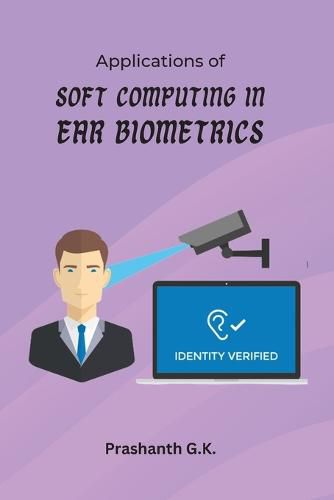Readings Newsletter
Become a Readings Member to make your shopping experience even easier.
Sign in or sign up for free!
You’re not far away from qualifying for FREE standard shipping within Australia
You’ve qualified for FREE standard shipping within Australia
The cart is loading…






This title is printed to order. This book may have been self-published. If so, we cannot guarantee the quality of the content. In the main most books will have gone through the editing process however some may not. We therefore suggest that you be aware of this before ordering this book. If in doubt check either the author or publisher’s details as we are unable to accept any returns unless they are faulty. Please contact us if you have any questions.
Ear biometrics is an emerging area of research that aims to develop accurate and reliable systems for identifying individuals based on the unique features of their ears. Soft computing techniques, such as machine learning, artificial intelligence, fuzzy logic, and neural networks, are increasingly being used in ear biometrics to extract and analyze ear features, patterns, and shapes. The use of soft computing techniques has led to the development of more accurate and robust ear recognition systems, with applications in security, authentication, and identification. The use of deep learning algorithms, coupled with large datasets of ear images, has shown promising results in improving the accuracy of ear biometrics, as well as reducing the impact of noise and other variations. Applications of soft computing in ear biometrics have important implications for privacy, as ear recognition systems can potentially be used for mass surveillance. Therefore, the development of accurate and reliable ear biometrics systems must be balanced with ethical considerations and legal regulations. Overall, the use of soft computing techniques in ear biometrics is an important area of research with significant potential for improving security and identification in various domains.
$9.00 standard shipping within Australia
FREE standard shipping within Australia for orders over $100.00
Express & International shipping calculated at checkout
This title is printed to order. This book may have been self-published. If so, we cannot guarantee the quality of the content. In the main most books will have gone through the editing process however some may not. We therefore suggest that you be aware of this before ordering this book. If in doubt check either the author or publisher’s details as we are unable to accept any returns unless they are faulty. Please contact us if you have any questions.
Ear biometrics is an emerging area of research that aims to develop accurate and reliable systems for identifying individuals based on the unique features of their ears. Soft computing techniques, such as machine learning, artificial intelligence, fuzzy logic, and neural networks, are increasingly being used in ear biometrics to extract and analyze ear features, patterns, and shapes. The use of soft computing techniques has led to the development of more accurate and robust ear recognition systems, with applications in security, authentication, and identification. The use of deep learning algorithms, coupled with large datasets of ear images, has shown promising results in improving the accuracy of ear biometrics, as well as reducing the impact of noise and other variations. Applications of soft computing in ear biometrics have important implications for privacy, as ear recognition systems can potentially be used for mass surveillance. Therefore, the development of accurate and reliable ear biometrics systems must be balanced with ethical considerations and legal regulations. Overall, the use of soft computing techniques in ear biometrics is an important area of research with significant potential for improving security and identification in various domains.